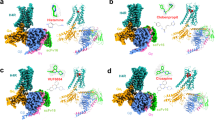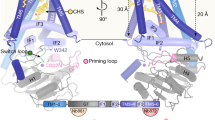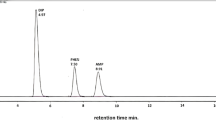Abstract
Mayer and Kull1 have demonstrated that ‘Pyribenzamine’ and ‘Antistin’ counteract the spreading effect of hyaluronidase, and have claimed, therefore, that these antihistamine drugs exhibit a strong anti-hyaluronidase action. In view of the failure by Swyer2, using an in vitro technique, to confirm a similar claim by Guerra3,4 with respect to a supposed anti-hyaluronidase property of salicylates, it was decided to investigate the effect in vitro of various concentrations of some antibistamine drugs upon the hyaluronidase system.
This is a preview of subscription content, access via your institution
Access options
Subscribe to this journal
Receive 51 print issues and online access
$199.00 per year
only $3.90 per issue
Buy this article
- Purchase on SpringerLink
- Instant access to full article PDF
Prices may be subject to local taxes which are calculated during checkout
Similar content being viewed by others
References
Mayer, R. L., and Kull, F. C., Proc. Soc. Exp. Biol. and Med., 66, 392 (1947).
Swyer, G. I. M., Biochem. J., 42, 32 (1948).
Guerra, F., Science, 103, 686 (1946a).
Guerra, F., J. Pharmacol, 87, 193 (1946b).
Kass, E. H., and Seastone, C. V., J. Exp. Med., 79, 319 (1944).
McClean, D., and Hale, C. W., Biochem. J., 35, 159 (1941).
Hechter, O., J. Exp. Med., 85, 77 (1947).
Swyer, G. I. M., Biochem. J., 42, 28 (1948).
Author information
Authors and Affiliations
Rights and permissions
About this article
Cite this article
MOYNAHAN, E., WATSON, D. Failure of Antihistamine Drugs to Inhibit Hyaluronidase in vitro. Nature 163, 173 (1949). https://doi.org/10.1038/163173a0
Issue date:
DOI: https://doi.org/10.1038/163173a0
This article is cited by
-
Zur Frage des antihyaluronidatischen Effektes von Antihistamin-Substanzen
Archiv f�r Dermatologie und Syphilis (1952)



